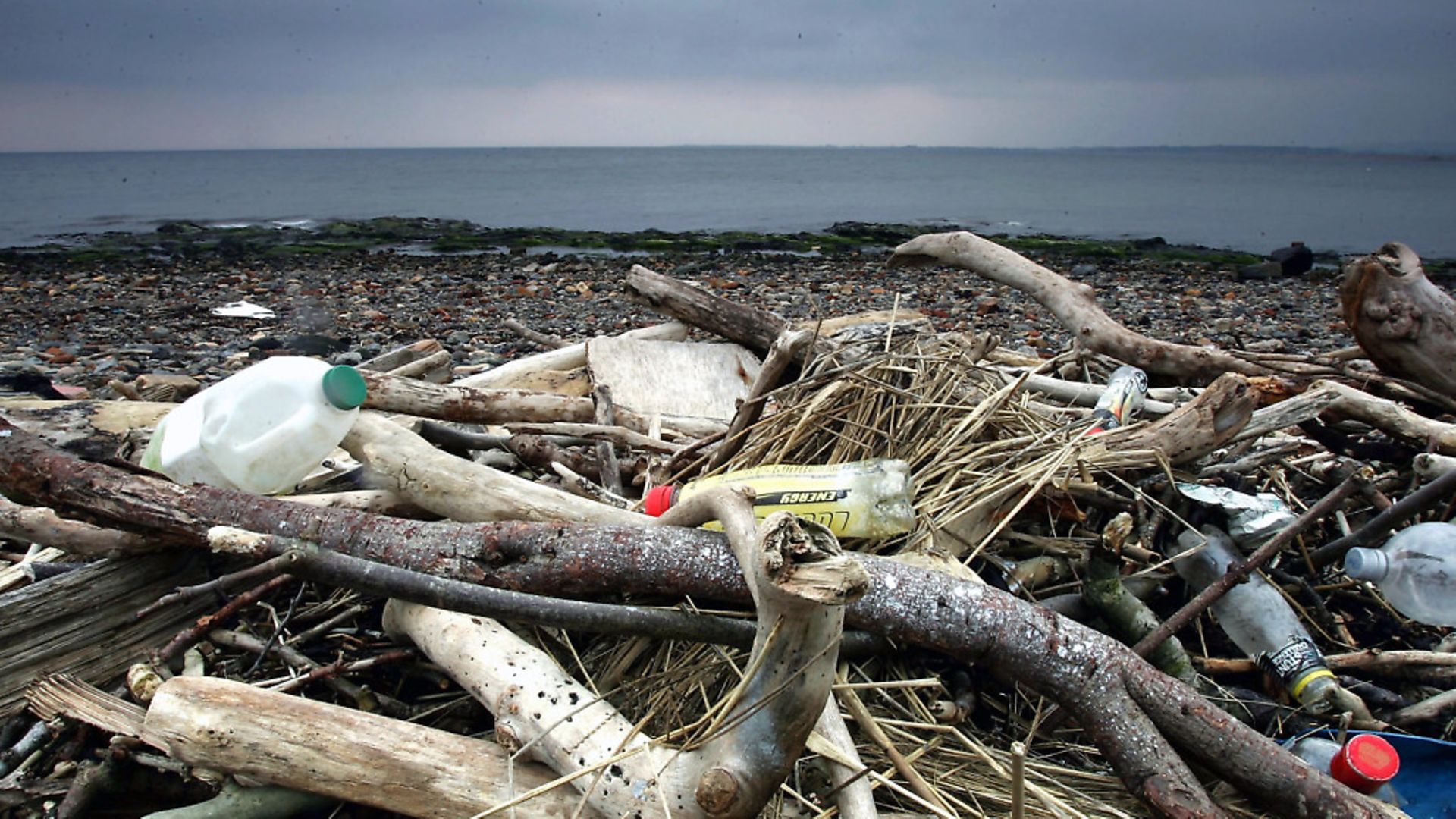
The war on plastic straws might make us all feel better but we shouldn’t mistake it for serious environmental progress, says TRACY KING. This battle is just the latest example of eco-misdirection.
Paper straws suck. This is not just a bad pun, but an immutable fact. Paper straws go soggy at both ends, especially if you’re the sort to bite your straw. Even the waxed paper ones have this problem. They’re not fit for purpose, and that’s one of the reasons they were almost entirely replaced worldwide with plastic straws just as soon as it was financially feasible to do so.
Plastic straws had been around in one form or another since 1870, but it wasn’t until the 1960s that they hit the mainstream. They replaced paper ones partly because they were (and still are) cheaper, and partly because they were a vastly superior product for the end user. And they still are. If you haven’t used the horror show that is a paper straw lately, brace yourself, because they’re coming back.
Why are paper straws coming back? Because of public pressure on restaurant and fast-food chains, partly in response to years of campaigning following a 2010 viral video showing a sea turtle with a plastic straw stuck in its nostril.
The image is a reflection of a much larger problem, that of plastic pollution in the ocean, but huge global issues are often less easy to communicate than a simple, straight-to-the-heart photo of an animal in distress. Humans did this, the turtle implies, with our stupid excesses and convenient sucking devices. Is a plastic drinking straw really worth the pain of this turtle?
No, it probably isn’t, but that’s not entirely the fault of the straw. It is perfectly possible to have our straws and suck them, but we (globally) lack good enough infrastructure to deal with our waste properly. The question isn’t necessarily ‘how can we stop plastic straws existing’ but ‘why the hell are plastic straws ending up in our oceans when I clearly put mine in the bin?’
Waste management is as boring as it sounds, which is partly the problem. Few people want to read about the journey from bin to truck to shipping container or landfill, and it doesn’t make for snappy photos.
Everyone knows we all generate too much waste, but even those who carefully separate rubbish and diligently place it in recycling bins might not put too much thought into where it goes after that. The scale of waste management is too huge to empathise with. My portion of the waste is tiny, I reason, so all that other stuff must be what Douglas Adams coined an SEP. Somebody Else’s Problem.
This is why there is demand for banning plastic straws: it’s an immediate and relatable bit of plastic waste. Starbucks and Disney have already committed to ditching plastic straws, although how it works out in practice remains to be seen. Recently a photo emerged of a branch of Starbucks apparently offering paper straws… each of which was individually wrapped in plastic.
In Britain, a large number of the straws that end up in the sea come from coastal towns. Seaside plus tourists equals litter. If I said ‘instead of banning plastic straws, campaign for more public bins, more funds for local councils to regularly empty the bins, and bigger fines for littering’, it all begins to sound exhausting. Much easier to just ban the straw and declare the problem solved. But the problem is not just the straws. The problem is industry and government.
Globally, most plastic isn’t recycled. It goes to landfill and on its way there bits of it can fall off the truck or the boat or out of the overflowing bin where the wind catches it and eventually carries it out to sea. From there it floats all over the world, wreaking havoc for marine wildlife and local ecosystems. How much of this plastic pollution is single-use straws? The often-quoted number of 500 million straws per day from the USA alone is inaccurate.
As Rebecca Watson at debunking site Skepchick noted: ‘The ‘500 million’ figure actually comes from, of all people, a nine-year old environmentalist named Milo Cress who was doing a school project on waste back in 2011. Back then, there was no easy way to Google the actual number, so Milo, to his credit, called various straw manufacturers and then made an estimated guess’.
Milo’s estimated guess was about double the actual number of plastic straws used per day in the USA, but it’s still hundreds of millions. A good number of those straws could be optional. Unless you’re driving or have a disability that requires a plastic straw, then you could just drink from the cup (after first removing the single-use disposable plastic lid, which is probably going to evolve into a sort of adult beaker to sip from instead of trying to roll out the insidious paper straws).
But what difference would it actually make to ocean plastic pollution? Almost none. One estimate puts plastic straws at 0.03% of ocean plastic pollution.
Anti-plastic activists argue that the straw ban is just a way to get people thinking about single-use plastic. But that argument doesn’t particularly hold water (I really am sorry about these puns). If plastic straws are banned then they’re out of sight, no longer a totem for plastic waste.
We know that people don’t care as much about the plastic they can’t see, because a significant amount – around 49% in the Great Pacific Garbage Patch (the collection of floating rubbish which circulates around the central north Pacific) – of the plastic in the ocean comes from the fishing industry, and you don’t see viral images or social media outrage about that. Not that it’s impossible.
The backlash against dolphins being caught in tuna nets led to some useful progress, but on the whole the discarding of plastic fishing nets and buoys is not a matter of public awareness. And even if it was, the solution seems out of the reach of the average consumer, who could just use one less plastic straw that day and call that progress. I see it as a type of ‘security theatre’, a phrase coined to describe the shoe-removal-and-bag-x-ray rigmarole that every traveller goes through at airports.
The argument is that such procedures are more for show than actual deterrent. It makes passengers feel safe and makes terrorists think someone is paying attention. The New York Times described airport security as ‘audience participation drama’, and I see many parallels with the plastic straw shaming and banning trend.
That’s not to say you should just use all the straws you want. If cutting down saves a turtle and makes you feel like you’re helping then great. It is helping, in a teeny tiny way. It all helps. By all means phase out single-use plastics, where a better or equal alternative is available. But don’t be fooled into thinking that it’s a black and white decision.
In some cases, plastic is a trade-off with food waste and hygiene considerations. You do not want to use a washable straw, trust me. Hygiene is a serious issue; while the 5p plastic bag charge has dramatically reduced the number of single-use bags in circulation, recent studies show that reusable shopping bags are unholy breeding grounds for bacteria including e-coli and campylobacter,.
Then there’s the other type of trade-off: which environmental concern trumps which? Ocean plastic pollution is extremely serious (not least, microplastics and plastic chemicals like BPA can enter the human food chain and also damage ecosystems like coral reefs), but so is air pollution. For example, a recent study by Denmark’s Environmental Protection Agency stated that a cotton tote bag would need to be used 7,100 times to offset the environmental impact of manufacturing it, if water impact, airborne pollution and other factors are taken into account.
So let’s say you cut down your single-use plastic consumption, and put the rest in the recycling. Good, right? Kind of. Britain is not great at recycling plastic. Partly it’s that boring waste management problem again. Britain doesn’t have the infrastructure to recycle our own plastics, so historically we have shipped off a huge amount of our waste overseas. Most ocean plastic pollution comes from China, but that’s in part because until very recently, China was taking in everyone else’s rubbish, and only recently got around to banning the import of the most harmful or difficult-to-recycle plastics.
This year a National Audit Office showed that British plastic packaging is now being sent to countries including Turkey and Malaysia instead, where it may simply end up in landfill. Some of it will absolutely end up in the sea. It’s extremely expensive to sort plastic waste by type and colour, so in some cases it’s just not cost effective to recycle. And that’s just consumer waste.
Consumer culture change about straws is not going to have a major impact, because straws themselves don’t have a major impact, despite what you might have been led to believe. What we really need is industry commitment to reducing packaging and manufacturing waste, better waste management and recycling infrastructure, bigger fines for pollution, funding and support for beach and ocean cleanups, more funding for research and science. Without that, the straw ban is just a straw man.
Tracy King is a writer, debunker, and science animation producer










